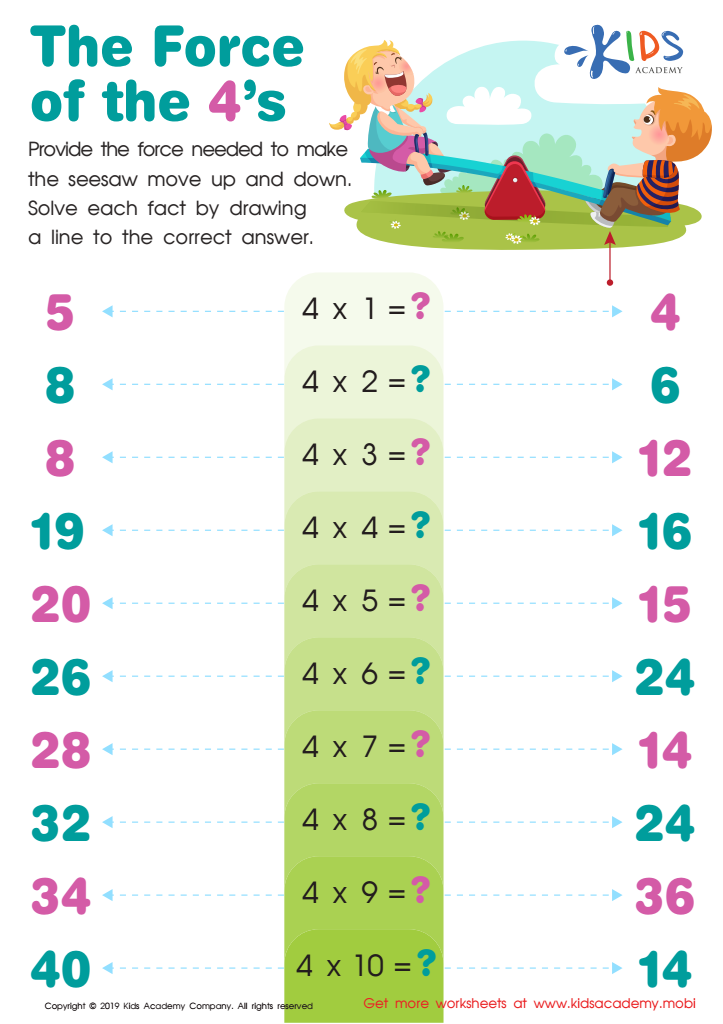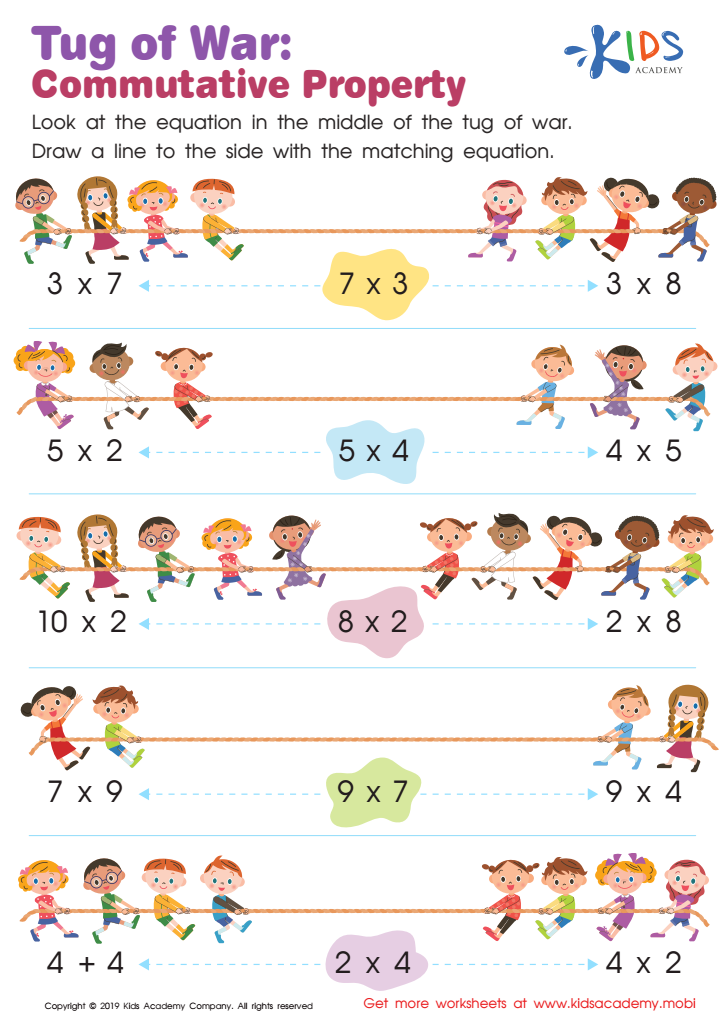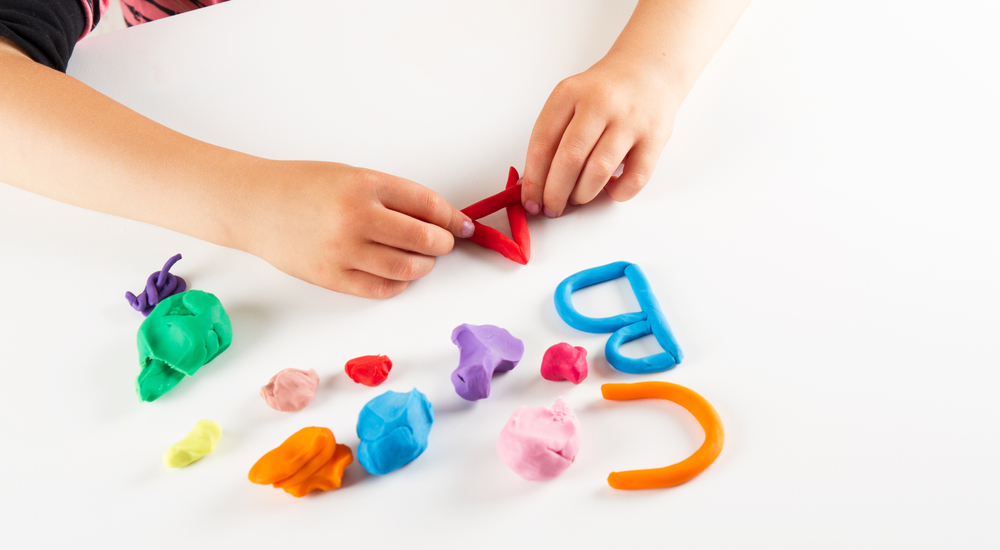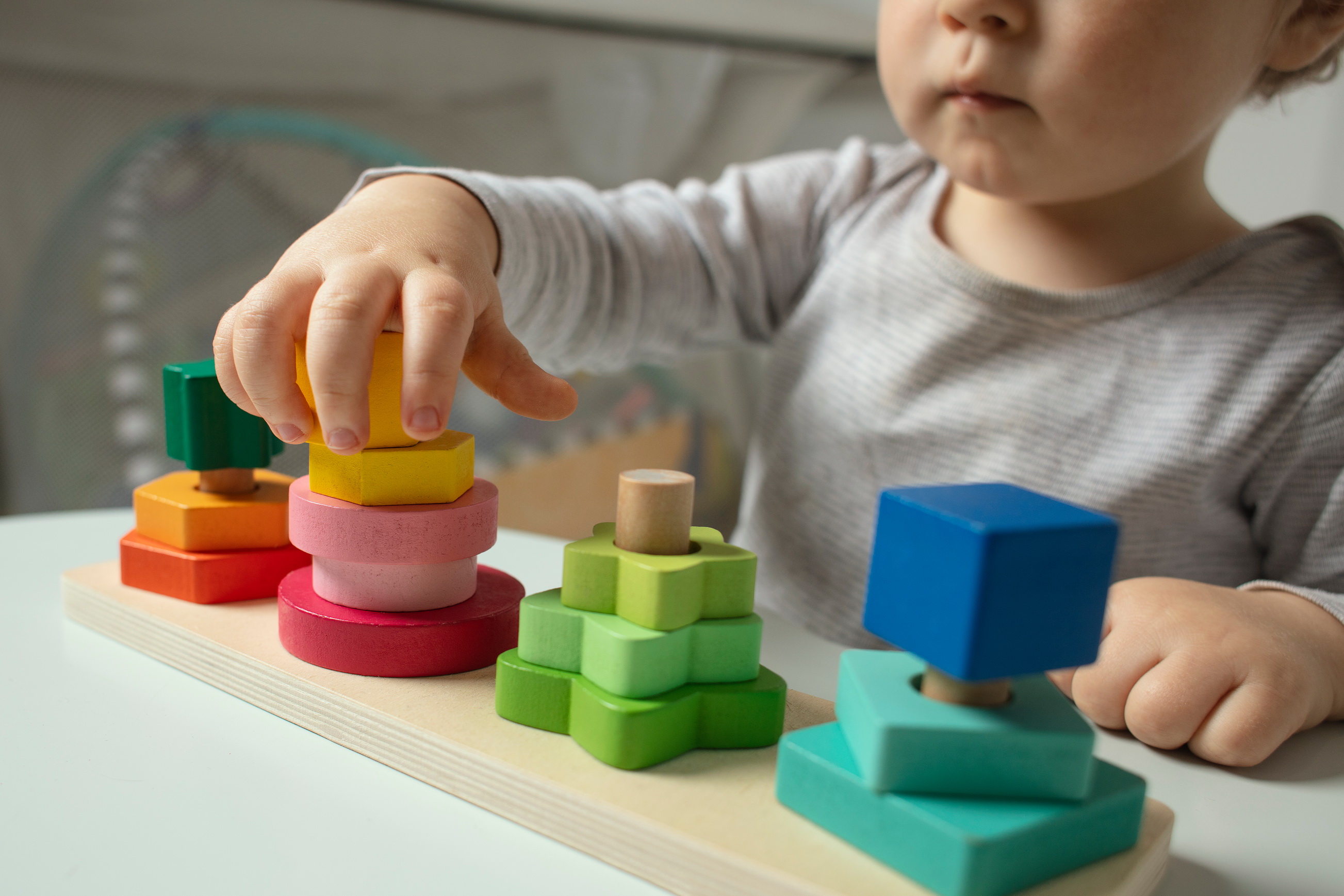Sorting worksheets activities for Ages 8-9
2 filtered results
-
From - To
Discover the Joy of Learning with Our Sorting Worksheets Activities!
Unlock a world of educational fun with our meticulously designed Sorting Worksheets Activities! Perfect for young learners, these activities are crafted to enhance cognitive skills and foster an understanding of classifications and categories. Engaging and interactive, our worksheets provide a hands-on learning experience that encourages critical thinking and attention to detail. From sorting shapes and colors to categorizing animals and objects, our activities cater to a variety of interests and learning levels. Dive into our Sorting Worksheets Activities today and watch as your child embarks on a journey of discovery and learning!


The Force of the 4's Worksheet


Tug of War: Commutative Property Worksheet
Sorting worksheets activities stand as an invaluable tool in educational environments, serving a multitude of purposes that align with the development of critical educational and life skills. These activities, structured around the concept of categorizing and organizing items according to various criteria, extend far beyond mere academic exercises. They are intricately designed to foster a deeper understanding of the world, enhance critical thinking abilities, and bolster problem-solving skills among learners of all ages.
Primarily, sorting worksheets activities introduce young learners to the foundational concept of classification. This is crucial as it mirrors the natural human instinct to understand and organize the world around us. By engaging in these activities, children learn to identify similarities and differences, a skill that forms the basis of logical thinking and reasoning. This early exposure to classification and categorization paves the way for more complex thought processes, including mathematical reasoning and scientific investigation.
Moreover, sorting worksheets activities are instrumental in enhancing observational skills. As students sort items based on color, shape, size, or other criteria, they become more observant of the details that define and differentiate objects. This heightened sense of observation is beneficial across all areas of study and daily life, encouraging a meticulous and attentive approach to the world.
Additionally, these activities promote problem-solving skills. Faced with a variety of items and a set of sorting criteria, students must devise strategies to classify each item correctly. This process involves critical thinking and decision-making, as students evaluate each item, consider its characteristics, and determine where it belongs. Such exercises are invaluable in nurturing an analytical mindset, essential for success in both academic and real-world scenarios.
In essence, sorting worksheets activities are far more than simple classroom tasks. They are a fundamental component in laying the groundwork for lifelong learning and development. By fostering classification skills, enhancing observational capabilities, and encouraging critical thinking, these activities equip students with the tools necessary to navigate the complexities of the world with confidence and competence.

 Assign to the classroom
Assign to the classroom

.jpg)










